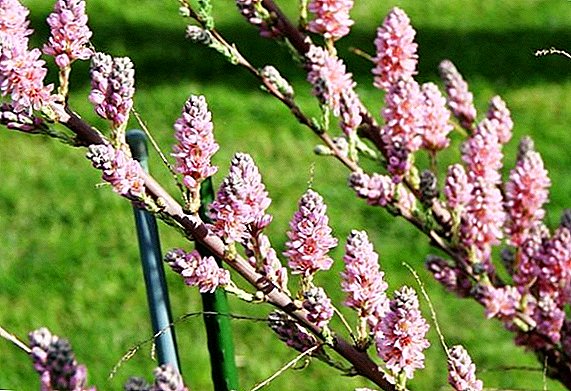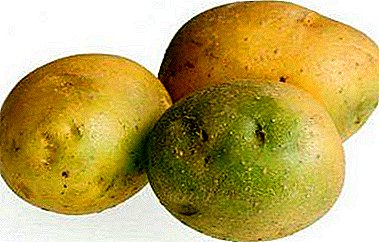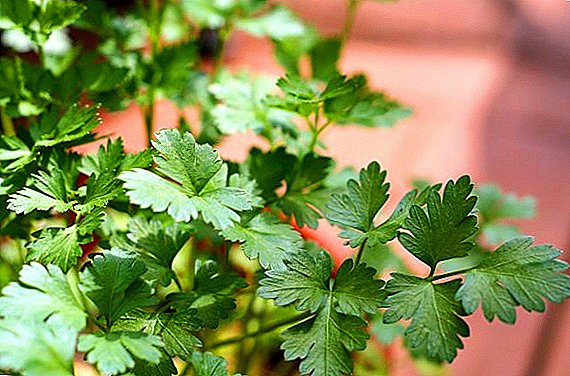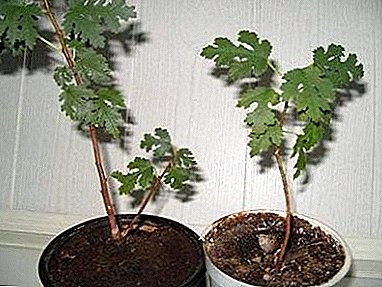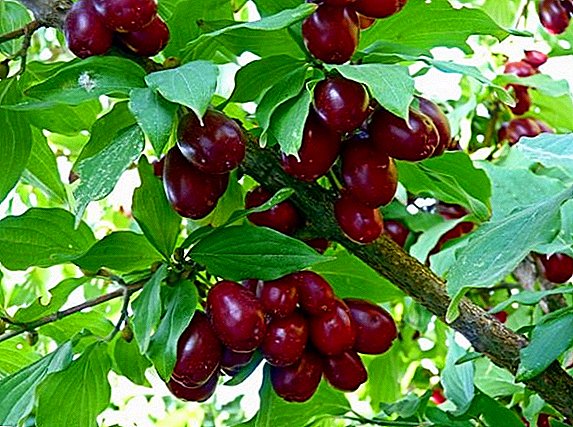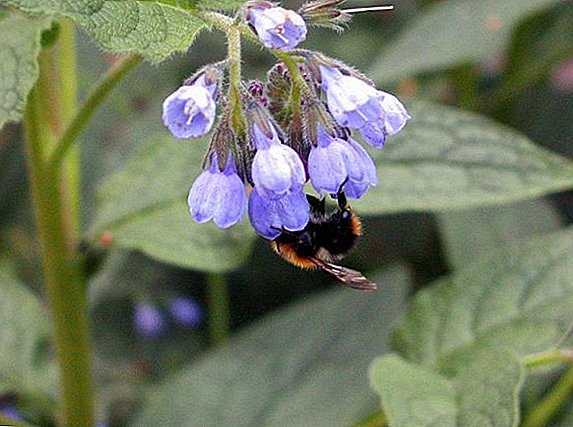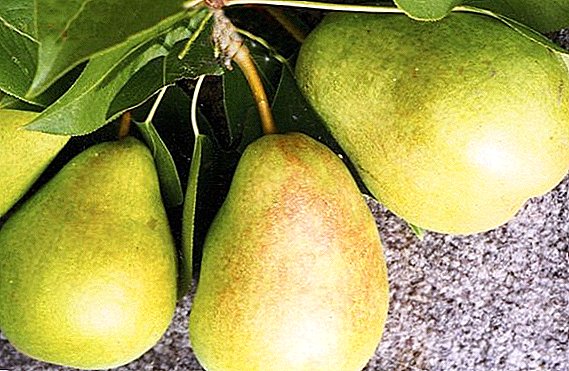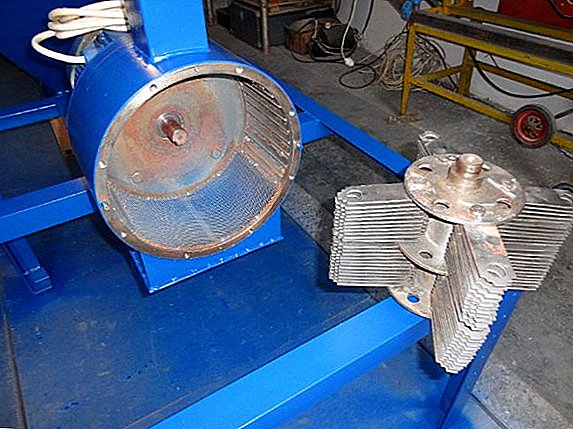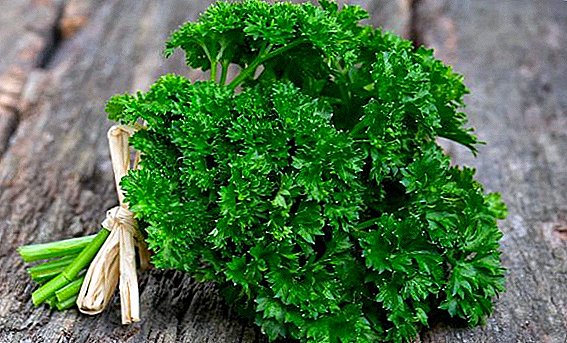 Parsley is a popular herb that grows everywhere in vegetable gardens and is used as a seasoning in cooking. Also parsley has healing properties. In this article we will talk about one of the varieties of parsley - curly parsley, its beneficial properties and peculiarities of cultivation.
Parsley is a popular herb that grows everywhere in vegetable gardens and is used as a seasoning in cooking. Also parsley has healing properties. In this article we will talk about one of the varieties of parsley - curly parsley, its beneficial properties and peculiarities of cultivation.
Botanical description
Curly parsley is a biennial plant with a height of 0.3-1 m. In the first year of life it forms a leaf rosette and a white spindle-shaped root, in the second - an upright, rounded stem from the middle with longitudinal ribs. The leaves are triangular, dark green. The upper ones are triply divided, and the lower ones are twice or tripartistically divided. Blooms in June-July, the fruit (visoplodion) appears in July-August.
Did you know? The Greeks used parsley to create funeral wreaths and garlands for the winners of the sports games in Nemen and Istimian.
Varieties of parsley curly
The most popular varieties of curly parsley:
- Aster. Early ripe, 55-60 days from the moment of emergence of shoots. Leaves of medium size are assembled in a half-raised rosette. Have a dark green color and corrugated shape. Cultivated in both open and closed ground.
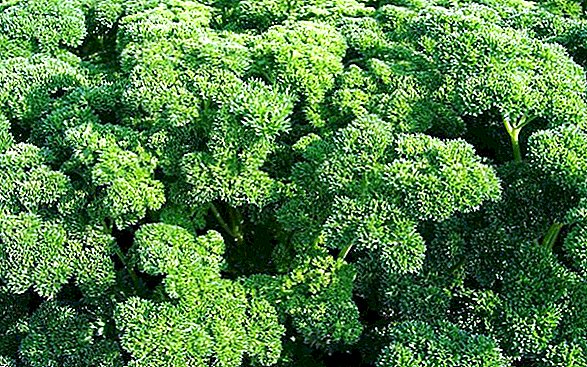
- Kaderava. Early variety, 70 days to technical ripeness. It has a semi-sprawling ground part with corrugated foliage of dark green color with a shiny surface. Root crop is not suitable for food. You can grow almost all year round and in open ground and in the closed.
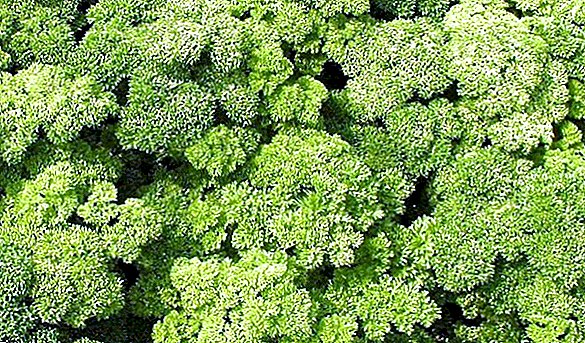
- Mooskrause 2. Also an early variety, 65-70 days, with a large semi-sprawling rosette. Foliage is green with corrugated edges. It has a pleasant smell and taste. It is possible to cut off foliage when it reaches 10-12 cm.
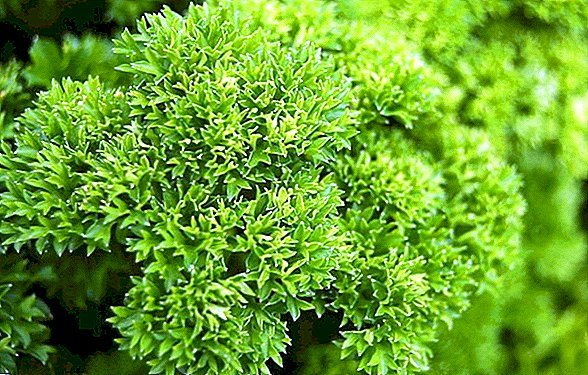
Chemical composition of the plant
| Popular garden culture has a very rich composition: | Also green contains: |
|
|

| Fruits contain: | Nutritional value of culture: |
|
|
What effect does curly parsley have on the human body?
This composition of the plant and causes its beneficial effects, as well as contraindications.
Important! Parsley is involved in building proteins, which is very necessary for vegetarians who are deficient in this substance.
Beneficial features
If you enter the green part of the plant in the daily menu, you can note:
- vision improvement;
- strengthen and whiten teeth;
- rejuvenation of the body;
- immunity strengthening;
- improve the state of the cardiovascular system;
- establishment of metabolic processes;
- the disappearance of inflammatory processes in the joints;
- normalization of sugar levels;
- the disappearance of problems associated with high acidity;
- normalization of appetite;
- the disappearance of inflammatory processes in the urinary system;
- cleaning the body and the coordinated work of the liver, colon, gall.

Harm
There are contraindications in the use of curly parsley:
- allergy;
- urolithiasis disease;
- cystitis;
- nephritis.
In Russia, the essential oils contained in curly parsley are on the list of narcotic substances.
Did you know? Favorite delicacy of Charlemagne - cheese with parsley seed flavor. Every year he was delivered two boxes of this unusual delicacy.
The reason for their inclusion in the list lies in these substances:
- apiol (or parsley camphor, acts on smooth muscle and eliminates problems with menstruation (painful, lack thereof));
- apiolic acid;
- myristicin (has a slight hallucinogenic effect in overdose);
- aliltetramethoxybenzene (antispasmodic);
- pinen (possesses mucolytic, warming action);
- ketone (toxic substance involved in metabolism).
 Narcotic substances contained in curly parsley None of these substances is found in the "List of narcotic drugs, psychotropic substances subject to control in the Russian Federation." Culture itself is not included in the "List of plants containing narcotic drugs or psychotropic substances or their precursors and subject to control in the Russian Federation." But curly parsley got into the “List of plants containing potent, narcotic or toxic substances” in the Sanitary-Epidemiological Rules and Regulations. More precisely, it was not the plant itself that fell, but its fruits, in which the largest amount of essential oils, and, therefore, of the substances listed above, therefore, their use can harm health.
Narcotic substances contained in curly parsley None of these substances is found in the "List of narcotic drugs, psychotropic substances subject to control in the Russian Federation." Culture itself is not included in the "List of plants containing narcotic drugs or psychotropic substances or their precursors and subject to control in the Russian Federation." But curly parsley got into the “List of plants containing potent, narcotic or toxic substances” in the Sanitary-Epidemiological Rules and Regulations. More precisely, it was not the plant itself that fell, but its fruits, in which the largest amount of essential oils, and, therefore, of the substances listed above, therefore, their use can harm health.
Video: parsley harm
Growing parsley and caring for it
The bed for the culture is prepared in the fall. It is advisable to choose a place for a plant where cabbage, cucumbers, potatoes, eggplants, and tomatoes have previously grown. In this place, the site is being dug up along with the previously introduced humus, rotted manure. In spring, the soil is loosened and mineral fertilizers are applied. Before planting, seeds need to be soaked, as they do not grow well. It takes 18 hours. Warm water is used. Sowing is done after April 15th.
Important! Parsley is frost-resistant, so it can be sown and before winter, until the beginning of November. Seeds are sown without soaking.
Seeds are placed in grooves with a depth of 6-12 mm with an interval of 70-100 mm. Between the grooves leave the same distance. In the hole you can put two or three seeds. Crops sprinkle with fertile soil and gently watered. Top lay a layer of mulch. If more frosts are expected, it is necessary to cover the crops with a film. Watering is carried out regularly, as the soil dries. The culture is fed twice per season with nitrogenous fertilizers.  You can use this mixture: 1 kg of organics, 15 g of superphosphate and the same amount of potassium sulfate pour 8-10 liters of water. Often root varieties are grown through seedlings. Sowing of seeds is carried out in the middle of March in boxes. For seedlings, the temperature is maintained at + 22 ... + 25 ° С. After the emergence of shoots the temperature is lowered to + 16 ... + 18 ° С. Transplant plants to a permanent place by transshipment in the second decade of May.
You can use this mixture: 1 kg of organics, 15 g of superphosphate and the same amount of potassium sulfate pour 8-10 liters of water. Often root varieties are grown through seedlings. Sowing of seeds is carried out in the middle of March in boxes. For seedlings, the temperature is maintained at + 22 ... + 25 ° С. After the emergence of shoots the temperature is lowered to + 16 ... + 18 ° С. Transplant plants to a permanent place by transshipment in the second decade of May.
Video: sowing parsley seedlings
Harvest
The first harvest of greens can be carried out in July. If you sow a crop during the summer, then you can gather greens right up to the cold weather. The leaves are cut almost off the ground. It is not recommended to completely remove the green mass on each plant. At a time, you can remove no more than 1/3, so that the plant can quickly recover. It is recommended to periodically cut the flower stem, as it prevents the growth of foliage on the main stem.
Find out what parsley is good for.
Curly parsley - a useful culture. It can be used for various health problems. But you need to be extremely careful, because due to the content in the essential oil, some substances with a slight narcotic effect, with abuse, you can harm yourself.





